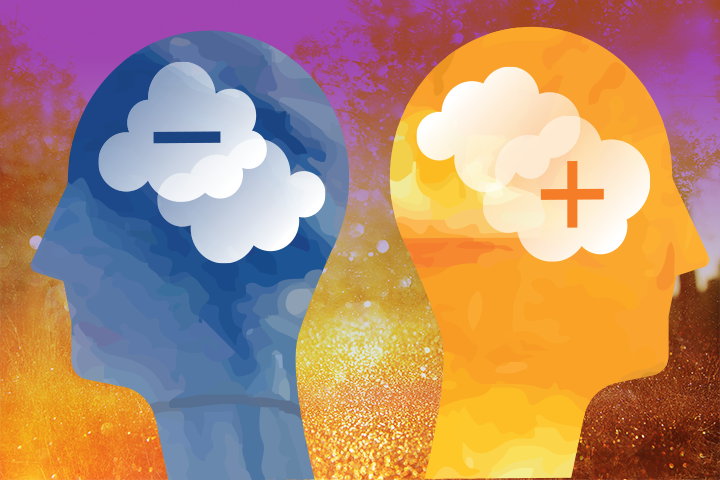3 min read
How Great Digital Strategy Bridges Two States of Knowledge
As we shift into the next wave of digital transformation, knowledge plays an increasingly foundational role in bridging organizational strategy and...
5 min read
Logical Design Solutions
:
5/23/18 9:59 AM
In the digital economy, industries, markets, and organizations confront relentless change. Following Moore’s Law, technologies are advancing at an exponential rate, and business races to keep pace. Digital organizations harness the power of technology to achieve rapid growth through unprecedented scalability. Like all opportunities, this abundance brings with it a challenge – how to leverage the collective knowledge of organizations that are growing faster, distributed further, and changing more rapidly than ever.
Successful businesses respond quickly to unexpected opportunities and lead through disruptive innovation. To build this capability, organizations race to find, attract, and retain the best talent. But investing in brilliant new hires isn’t enough; the pace of disruption means that information and skills become obsolete quickly. To foster knowledge as a scalable, sustainable enterprise capability, businesses need to instill knowledge practices through organizational and work design.
Old models of knowledge assume information is structured, static, and based on documented, repeatable skills that are passed on through conventional education pathways and “owned” by experts. Those models are no longer relevant. Today, effective learning workers are most adept at challenging assumptions, unlearning what they already know, and creating and sharing new knowledge in new contexts. Individual learning practices fuel the proliferation of insights across distributed networks and help the business move quickly in response to change. Crucially, they instill insights that last, even when individual experts leave the company.
One key insight from the World Economic Forum is that knowledge is perhaps the most valuable asset in today’s economy: “knowledge is the new money. Similar to money, knowledge often serves as a medium of exchange and a store of value.” And this value asset is a key enabler of the exponential organization: “unlike money, when you use knowledge or give it away, you don’t lose it … Its value compounds over time faster than money.” People learn to be effective learners, and the more they know, the more they can learn and share learning. This is a tremendous asset to the organization, if this knowledge can be accessed and mobilized efficiently.
Enterprise knowledge capabilities both enable and rely upon individual knowledge practices. When systems, networks, and norms are conducive to open ideation and knowledge sharing, individuals are empowered to adopt ongoing practices of experiential learning and leadership. Likewise, good individual knowledge practices reinforce knowledge networks, encourage leadership development in colleagues, and support continuous learning through mentoring and coaching.

Good work design enables new knowledge practices at the individual level, but should also reach beyond individual roles, competencies, and skills to address collective practices that are needed. Today, when automation is fundamentally changing the nature of work for most people (sometimes to the extent of eliminating tasks and requiring major re-skilling of the workforce) knowledge practices become critical to people’s effectiveness in their jobs. Workers need to learn and adapt all the time – often unlearning what they know, aligning to new methodologies and human-machine relationships, and adapting their skills for new contexts.
This is where knowledge strategy intersects with business platform design – businesses must design new ways of working and learning comprising information, practices, and relationships. A persistent and accessible knowledge ecosystem must transcend conventional repositories of information and learning to impact the way the business operates.
Effective individual knowledge practices produce an abundance of know-how, insight, relationships, data, content – as well as less tangible knowledge assets such as the ability to empathize, anticipate, compromise, adapt, and interpret. These knowledge practices span role-centric and common contexts, from the localized intelligence that a worker uses in her job every day to the way people imagine themselves in the future organization.
To put this knowledge into action, companies need to start by understanding the knowledge that they have and identifying the knowledge that they need. The challenge is almost never a lack of knowledge – it’s too much, with most of it being either poor quality or hard to find. Even the most valuable knowledge is useless in the hands of a person who can’t or doesn’t know how to use it.
Recent advances in machine learning and cloud infrastructure are helping businesses extract more insight from their data, helping to identify opportunities, provide decision support, and direct the attention of workers to mission-critical status and information. The typical enterprise is inundated with data, but analytics is only half the story.
Companies need to take a holistic look at all the knowledge they possess to inform strategic decisions about how information should be captured, consumed, shared, and governed. Martin Ihrig and Ian MacMillan provide a useful framework for understanding knowledge assets based on how they are structured and shared:
This framework provides a useful lens for understanding how content, work structures, relationships, and technology work (or don’t work) in service of enterprise knowledge. For many companies, the highest-value knowledge is both unstructured and undiffused: it’s the expert knowledge of a long-tenured worker, for example, gained through years of experience. This knowledge is often the least accessible to the organization as a whole. Too often, it leaves the company when the worker does. Examples of structured and diffused knowledge, by contrast, might include handbooks, policies, and yearly reports. They’re valuable, but slow to respond to change and opportunity. Other content falls along the spectrum: commonly held cultural values would be unstructured but diffused; proprietary knowledge to which only a few executives have access would be structured but undiffused.
For many organizations, the challenge is building good knowledge contexts – and one strategy for this is combining structured and unstructured knowledge. This bridges the gap between enterprise capability and individual practice. Consider the following scenarios:
With a clear-eyed understanding of the value of, use cases for, and gaps in their enterprise knowledge capabilities, business platform design should focus on creating new opportunity contexts that enable desired knowledge practices, both in specific jobs and across the enterprise digital common.
Ultimately, business platforms promote:
We guide clients through platform design across four key capability areas: content, culture, data, and technology.

Culture: There is an old assumption that we spend the first 22 or so years of our lives learning, and then work until retirement. Workers who have actually done so may need to relearn how to learn. A critical lever in shifting this mindset is culture. Organizations and communities that celebrate learning, encourage the creation of knowledge networks, and assume individual accountability for collective knowledge efforts establish new norms that are critical to exponential knowledge growth.
Content: Conventional learning – the old term is “book learning” – is taking a back seat to continual learning through education, experience, and exposure to others. This doesn’t diminish the central role of content strategy in supporting and sustaining knowledge growth. Inquiry systems like search, chatbots, and voice (and the structures that drive them) are key to locating information and answering questions effectively. Governance structures ensure that information is findable, shareable, and maintains its quality over time, whether the assets in question are in print, video, interactive digital experiences, or new experience contexts that help people understand when and how to learn.
Data: Data makes smart systems smarter over time. It humanizes digital experiences, enables hyper-relevancy, and optimizes information flows based on changing conditions or goals. In any knowledge system, data should be approached two-fold: as an asset that people consume, share, and act upon; and as an experiential enabler that focuses the flow of content, attention, and connectivity.
Technology: If exponential technology is what makes new knowledge practices necessary, it’s also what fuels them. As culture promotes open idea sharing, technology ensures that high-value information remains secure. As content strategy and data drive hyper-personalized, dynamic knowledge flows, technology delivers them. Businesses need to consider technology always as an enabler in the context of other enablers, never as a stand-alone solution. Investing in a new learning platform without considering broader business strategies and contexts, in other words, rarely results in transformative enterprise knowledge capabilities.
The businesses that succeed in enabling effective knowledge creation, consumption, sharing, and governance gain immeasurable advantage in the exploding digital economy. They attract, retain, and mobilize the best talent. They build customer-centric insights into every job and at every level. They innovate faster, collaborate more effectively, and respond more adeptly to disruptive change.
There is no one-size-fits-all solution to realizing the collective knowledge for every worker, but a committed knowledge strategy that sits up at the level of business platform design is critical for success. For workers to adapt, learn, and work together in newly efficient, creative, and empathetic ways, the work itself must serve as inspiration, purpose, and enabler.

3 min read
As we shift into the next wave of digital transformation, knowledge plays an increasingly foundational role in bridging organizational strategy and...

2 min read
As knowledge workers have evolved to meet the challenges and opportunities of digital, many businesses have prioritized and realized transformative...

6 min read
Customer-facing digital transformation is well underway in healthcare. This industry has become a leader in its synthesis of business strategy and...